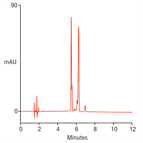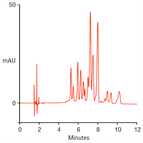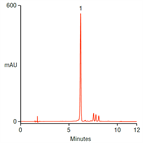Find methods for your needs
Refine by Feature
Displaying 1-5 of 5 results for Tag: fruit
Determination of Different Classes of Pesticide Residues in Processed Fruits and Vegetables by LC-MS Using the TSQ Quantum Ultra According to EU Directive 91/414 EEC
Instrument Type: LCMSMSA diet rich in fruits and vegetables is thought to reduce the risk of some types of cancer, circulatory, and heart disease. Commercially grown produce can contain high levels of pesticide residues that can lead to serious health problems when consumed. Due to growing public concern over the amount of pesticide residues in foods, the EU has enacted several directives including new 'active' ingredients entering the market to replace compounds banned by Directive 91/414/ EEC. We describe an LC-ESI-MS/MS method for the detection and quantification of 45 pesticides in various food matrices.
Improved analysis of anthocyanins in raspberry using a Thermo Scientific Acclaim C30 column
Instrument Type: HPLCThe Thermo Scientific UltiMate 3000 RSLC system is applied for the analysis of anthocyanins in raspberry. The separation is performed on a Thermo Scientific Acclaim C30 column, with UV detection at 520 nm.
Improved analysis of anthocyanins in blueberry using a Thermo Scientific Acclaim C30 column
Instrument Type: HPLCThe Thermo Scientific UltiMate 3000 RSLC system is applied for the analysis of anthocyanins in blueberry. The separation is performed on a Thermo Scientific Acclaim C30 column, with UV detection at 520 nm.
Improved analysis of anthocyanins in blackberry using a Thermo Scientific Acclaim C30 column
Instrument Type: HPLCThe Thermo Scientific UltiMate 3000 RSLC system is applied for the analysis of anthocyanins in blackberry. The separation is performed on a Thermo Scientific Acclaim C30 column, with UV detection at 520 nm.
AN143: Determination of Organic Acids in Fruit Juices
Instrument Type: ICThis application note shows how organic acids can be determined in fruit juices at low to high mg/L concentrations using a simple dilution, an IonPac AS11-HC, electrolytically generated eluent gradients, and suppressed conductivity detection. The fruit juices analyzed in this application note are orange, grape, apple, and cranberry.





